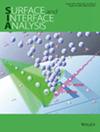Industrial scale fouling of heat exchangers in isocyanate production
IF 1.6
4区 化学
Q4 CHEMISTRY, PHYSICAL
引用次数: 0
Abstract
The fouling of a commercial stainless steel (AISI 316L) during the manufacture of polymeric methylene diphenyl diisocyanate (pMDI) has been studied using laboratory‐based fouling apparatus that simulates commercial production conditions. The goal of the work is to understand the mechanisms behind the corrosion and fouling during isocyanate production with a view to improving process efficiency, not only in this process, but also others using similar plant and processes. Steel coupons were exposed to a solution of pMDI and solid amine hydrochloride, with hydrogen chloride gas being bubbled through the reaction cell. A number of different conditions were investigated, the variables being pMDI concentration, HCl gas flow duration, immersion time and temperature. Following the fouling experiments the coupons were removed from the fouling rig, photographed, and examined by XPS and ToF‐SIMS; principal component analysis was used to extend the ToF‐SIMS analysis to identify organic fouling products. The extent of fouling is shown to be relatively insensitive to pMDI concentration, but significantly influenced by continual HCl flow and increased temperature, features which increase the extent of substrate corrosion thought to be a precursor to the fouling process itself. Both XPS and ToF‐SIMS confirm the formation of various nickel chlorides in the corrosion process. Urea and metal corrosion products are found to co‐exist on certain (random) areas of the coupon surface.异氰酸酯生产过程中热交换器的工业规模结垢问题
使用模拟商业生产条件的实验室结垢装置,对聚合二苯基二异氰酸酯(pMDI)生产过程中的商用不锈钢(AISI 316L)结垢情况进行了研究。这项工作的目的是了解异氰酸酯生产过程中腐蚀和结垢的机理,以提高工艺效率,不仅在该工艺中,而且在使用类似设备和工艺的其他工艺中也是如此。将钢制试样暴露在 pMDI 和固体盐酸胺溶液中,并在反应池中通入氯化氢气体。对许多不同的条件进行了研究,变量包括 pMDI 浓度、氯化氢气流持续时间、浸泡时间和温度。污垢实验结束后,将试样从污垢装置上取下,进行拍照,并通过 XPS 和 ToF-SIMS 进行检测;使用主成分分析来扩展 ToF-SIMS 分析,以确定有机污垢产物。结果表明,污垢程度对 pMDI 浓度相对不敏感,但受持续盐酸流动和温度升高的显著影响,这些特征增加了基底腐蚀的程度,而基底腐蚀被认为是污垢过程本身的前兆。XPS 和 ToF-SIMS 都证实在腐蚀过程中形成了各种镍氯化物。在试样表面的某些(随机)区域发现尿素和金属腐蚀产物共存。
本文章由计算机程序翻译,如有差异,请以英文原文为准。
求助全文
约1分钟内获得全文
求助全文
来源期刊

Surface and Interface Analysis
化学-物理化学
CiteScore
3.30
自引率
5.90%
发文量
130
审稿时长
4.4 months
期刊介绍:
Surface and Interface Analysis is devoted to the publication of papers dealing with the development and application of techniques for the characterization of surfaces, interfaces and thin films. Papers dealing with standardization and quantification are particularly welcome, and also those which deal with the application of these techniques to industrial problems. Papers dealing with the purely theoretical aspects of the technique will also be considered. Review articles will be published; prior consultation with one of the Editors is advised in these cases. Papers must clearly be of scientific value in the field and will be submitted to two independent referees. Contributions must be in English and must not have been published elsewhere, and authors must agree not to communicate the same material for publication to any other journal. Authors are invited to submit their papers for publication to John Watts (UK only), Jose Sanz (Rest of Europe), John T. Grant (all non-European countries, except Japan) or R. Shimizu (Japan only).
 求助内容:
求助内容: 应助结果提醒方式:
应助结果提醒方式:


